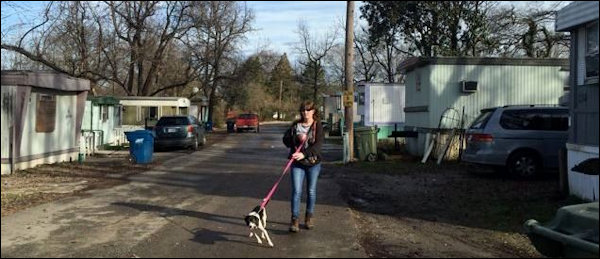
Which better represents the future of Chesterfield County? Rudd’s Trailer Park……. (Photo credit: Richmond Magazine
This column was published originally in the Chesterfield Observer. While the details of migration trends in and out of Chesterfield is unlikely to prove of great interest to anyone outside of Chesterfield, the analysis shows how citizens can use IRS migration data to gauge the health of their home locality.
Hobbled by the sequestration-driven budget squeeze of defense spending, Virginia experienced its fourth consecutive year in 2016 of out-migration, the University of Virginia’s Demographic Research group reported late last year. While 301,000 income tax-filing households moved into the state, 315,800 moved out, for a net loss of 14,800 households. The last four years are quite a comedown for a state that previously had seen healthy population inflows every year since the Internal Revenue Service began compiling the statistics in 1978.
The picture looks somewhat better for Chesterfield County, which saw a net gain of 687 households from people moving in and out of the county in 2016. Some 10,300 households entered the county while 9,600 left and another 123,400 stayed put.

….or this McMansion?
People move from one locale to another for a multitude of reasons, but it’s normally a good sign when more people move in than out. Insofar as people follow jobs when they move, a net gain in migrants could mean that more jobs are being created. An inflow of residents also pumps up demand for housing, retail and services, thus stimulating local economic activity.
On the flip side, an influx of households places greater burden on the county to provide education, public safety, streets and roads, and other basic government services. In an ideal world, the newcomers bring in more taxable income and spending power to help pay for those services than those who leave. Unfortunately, that’s not what’s happened in Chesterfield. Households that moved here in 2016 reported an average income of $56,200; those that left reported $58,500 – for a total net loss of $17 million in countywide income. Admittedly, that’s a drop in the bucket compared to the $10.1 billion in total income reported by all non-migrants. But if this becomes a trend and persists for years and decades, it could fundamentally change the nature of the county.
A large percentage of the coming and going consists of people moving to and from neighboring jurisdictions in the Richmond metropolitan area. In 2016, Chesterfield experienced a net gain of 401 residents from Henrico County, 229 from the City of Richmond, and 56 from the city of Petersburg. However, the county lost a net of 126 households to Powhatan County.
The good news for Chesterfield is that it is importing more affluent households from Richmond, Henrico and Petersburg than it is exporting.
Newcomers from Richmond earned on average $46,100, while those moving from Chesterfield to the city reported only $39,500 in income.
Similarly, Henrico immigrants to Chesterfield earned $60,200 on average while households going the other way earned only $49,900.
The differential for Petersburg was $37,200 on average for households heading from the city to the county compared to a lowly $29,800 for households heading in the reverse direction.
However, Chesterfield lost significant income to Powhatan County in 2016. While the number of migrants is relatively small, the income differential is vast. Households moving from Powhatan to Chesterfield made $48,900 on average while those leaving Chesterfield earned $87,200, a differential of $37,300.
The largest sources of in-migrants from outside the region are Fairfax County, Virginia Beach, and Wake County, North Carolina (in the Raleigh metropolitan area).
The wrong conclusion to draw from this data is that Chesterfield taxpayers might benefit from crafting policies and ordinances that make the county less attractive to the poor, say, by blocking real estate projects developed for lower-income households. Aside from the ethical issues raised by discriminating against the poor, that’s not even good policy. Poor people will gravitate toward the cheapest, least desirable housing stock available in the metro area, whether it’s public housing projects in Richmond or aging cul-de-sac neighborhoods of small, rundown 1950s and ’60s era ranch houses in Chesterfield, regardless of any policies the county pursues.
A better strategy is to make carefully considered investments that help build a more prosperous, livable and sustainable community for all. Tracking the IRS migration data is a good way to tell how well county leaders are doing to create a desirable place for everyone to live, work and play.


